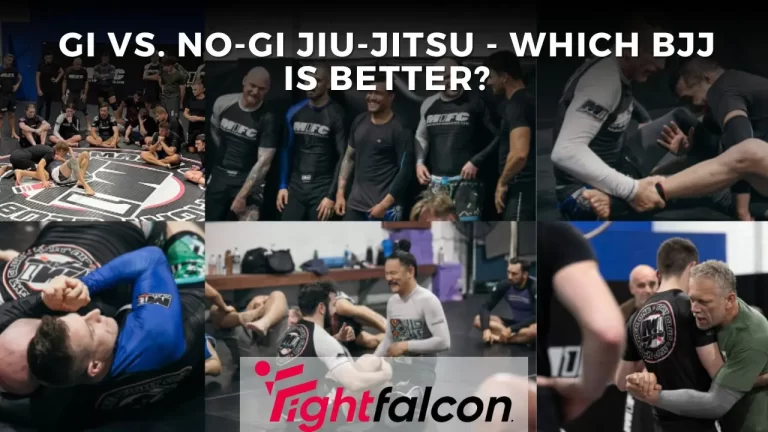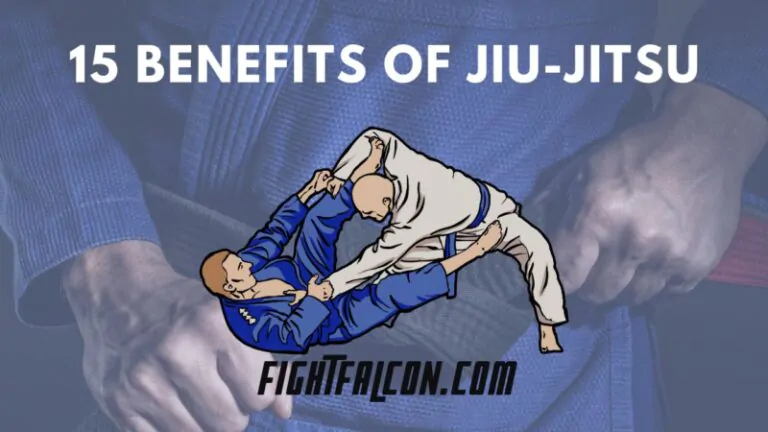Top 10 Different Types of Jiu-Jitsu
Jiu-Jitsu is a Japanese Martial Art known for its close-quarters combat. Most of its sub-divisions use unarmed hand-to-hand combat, but some also utilize weapons, as these styles were used in battles. In today’s world, Jiu-Jitsu is used as a defensive skill to subdue a threat. It also has gained prominence in the entertainment world. Jiu-Jitsu has a whole lot of sub-divisions.
The prominent types of Jiu-Jitsu that still hold a valuable reputation to this day include Japanese Jiu-Jitsu, Brazilian Jiu-Jitsu, Aikido, Sambo, Judo, Kenpo, and the most recognized, Mixed Martial Arts (MMA). These divisions span from the 17th century and continue to advance.
In this article, I’ll cover the valuable history of all these types of Jiu-Jitsu, their main focus, styles, and techniques, what type of equipment they use, and how they have shaped the Martial Arts world.
A Comprehensive Analysis Between Types of Jiu-Jitsu
| Martial Art | Origins | Techniques | Influence on Others | Competitive Aspects |
|---|---|---|---|---|
| Japanese Jiu Jitsu | Emerged in 17th-century Japan for defense | Uses throws, locks, and strikes | Inspired by Judo, Aikido, and Kenpo Jiu Jitsu | Historical and sport-based competitions |
| Brazilian Jiu Jitsu | Evolved in Brazil from Japanese Jiu-Jitsu | Focuses on ground fighting and submissions | Shaped ground-based styles like MMA worldwide | Big in BJJ tournaments and MMA events |
| Luta Livre | Originated in Brazil with a grappling focus | Similar to No Gi grappling, allows striking | Historic rivalry with Gracie Jiu-Jitsu declined | Competitive history; some informal practice remains |
| Aikido | Created in the late 1920s for self-defense | Uses throws, locks, and weapons integration | Emphasizes harmony; influenced self-defense | Less competitive, focus on philosophy |
| Sambo | Russian origin; sports and combat versions | Mixes Judo-like throws with MMA-style striking | Influence in MMA and Olympics; diverse techniques | Tournaments and MMA-style bouts |
| Judo | Evolved from Japanese Jiu-Jitsu by Kano | Focuses on throwing techniques and groundwork | Influenced BJJ, Sambo, and MMA with throws | Prominent in Olympics and international contests |
| Kenpo Jiu Jitsu | Emphasizes hand and foot striking techniques | Rapid, powerful strikes with minimal blocking | Unique focus on strikes; less direct influence | Varied; emphasis on strikes and hand techniques |
| Mixed Martial Arts | A blend of various martial arts disciplines | Combines striking, grappling, and ground fighting | Influenced by multiple arts, known for versatility | Competitions across diverse martial arts styles |
| American Jiu-Jitsu (AJJ) | Developed in the United States | Incorporates elements of traditional Jiu-Jitsu, Judo, and wrestling. | Emphasizes practical self-defense techniques for real-life situations. | Focuses on stand-up techniques, takedowns, and throws. |
| Combat Jiu-Jitsu (CJJ) | Hybrid style derived from Brazilian Jiu-Jitsu | Combines traditional Jiu-Jitsu techniques with striking elements. | Introduces striking into the grappling arena, simulating real-world combat scenarios. | Requires practitioners to be adaptable and develop heightened awareness. |
Top 10 Types of Jiu-Jitsu
1. Japanese Jiu-Jitsu

The foundation of Jiu-Jitsu, Japanese Jiu-Jitsu, was born in 17th century Japan. It emerged as a critical self-protection system warriors use while facing armed opponents. Its early focus was on unarmed combat strategies to counter swordsmanship in conflicts. It involved throws, holds, and disabling attacks focused on subduing adversaries.
This martial art’s backbone did involve a few weapons, but primarily, it depended on throws and holds. This escalated to paralyzing strikes against foes. Over time, Japanese Jiu Jitsu laid the basis for various martial arts like Judo, Aikido, and Kenpo Jiu Jitsu.
Its problematic yet powerful techniques targeted the use of an opponent’s energy and momentum towards them. These movements involved leverage-based joint locks, chokeholds, and crushing maneuvers. Overall, emphasizes control and submission. It turned into a high-caliber wrestling style supposed to dominate adversaries.
Beyond its direct effect, Japanese Jiu-Jitsu closely motivated numerous martial arts. Its ideas have been followed and modified via Kano Jigoro, leading to the start of Judo. With its throws and takedowns, the essence of Japanese Jiu Jitsu became the early form of Judo, later inspiring arts like Aikido and Kenpo Jiu Jitsu.
2. Brazilian Jiu-Jitsu
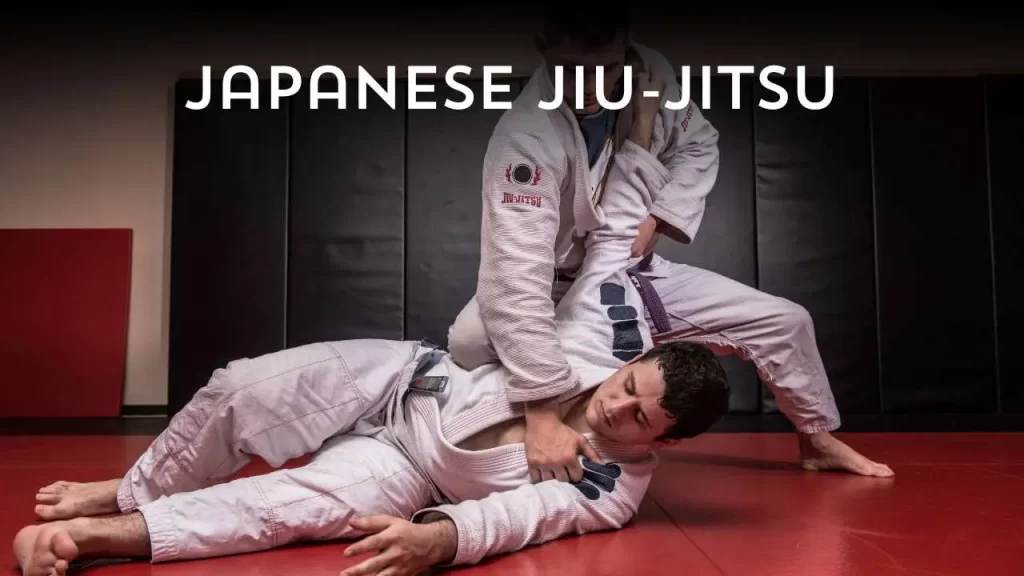
Brazilian Jiu-Jitsu, or BJJ, goes back in time with Japanese Jiu-Jitsu. But it went through a wonderful evolution as soon as it landed on Brazilian soil.
Helio Gracie, a key parent in BJJ’s development, could not completely execute many throws due to his smaller stature. So, he adapted the techniques, focusing on leverage and approach rather than pure strength.
Helio’s revolutionary technique birthed Gracie Jiu-Jitsu, later known as Brazilian Jiu-Jitsu. It emphasized ground fighting and submissions. This transformation made BJJ more accessible, allowing smaller people to overcome large combatants. This adaptability and efficiency became the hallmarks of Brazilian Jiu-Jitsu.
Gracie Jiu-Jitsu became popular and evolved further through the next generations of Gracies. Its introduction to the global stage, especially through the Ultimate Fighting Championship (UFC), made it an international phenomenon. BJJ practitioners showcased their effectiveness by dominating opponents with technical prowess and submission holds.
This dominance in competitive arenas and its realistic self-defense applications contributed to its international impact. Today, Brazilian Jiu-Jitsu is one of the most popular and broadly practiced martial arts globally.
3. Luta Livre Esportiva and Vale Tudo
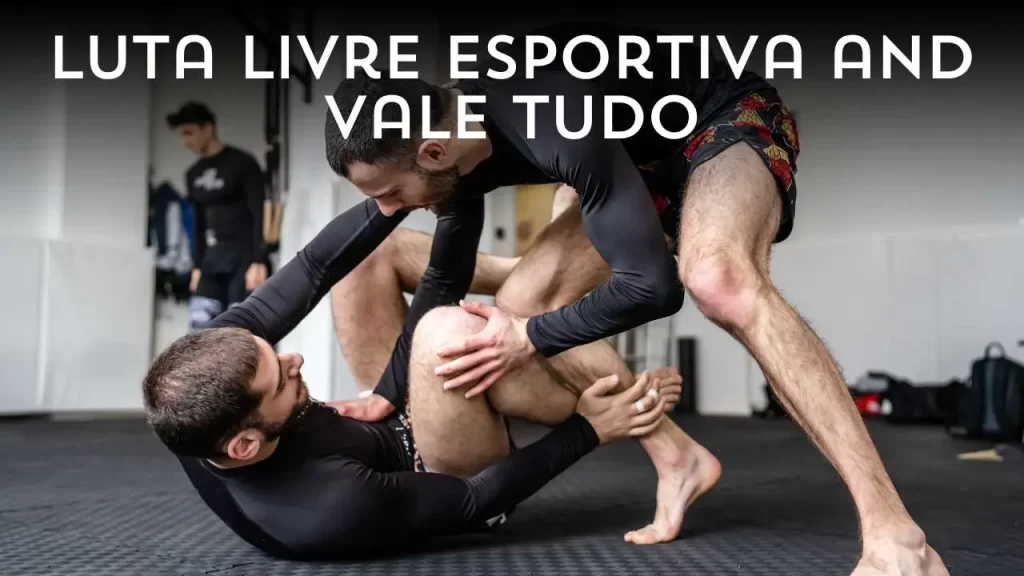
Luta Livre Esportiva and Vale Tudo emerged in the late 1920s as distinct Brazilian martial arts. Luta Livre Esportiva focused on grappling, resembling No Gi grappling in Brazilian Jiu Jitsu, while Vale Tudo mixed No Gi grappling with striking techniques involving hands, feet, knees, and elbows.
The rivalry between Luta Livre and Gracie Jiu-Jitsu escalated fiercely. There was a consistent conflict for dominance between these Brazilian martial arts schools. High-stakes confrontations often led to heated clashes among individuals of the Gracie clan and Luta Livre fighters.
Euclydes Hatem, a prominent figure in Luta Livre, engaged in legendary battles against George and Rickson Gracie, leading to an intense rivalry.
These rivalries were not constrained to the martial arts arenas; they spilled onto the streets, resulting in violent clashes, dojo storms, and even weapon-involved conflicts. Incidents like the Renzo Gracie vs. Eugenio Tadeu match riot led the Brazilian government to ban Vale Tudo nationwide. This led to a substantial decline in its popularity and legitimacy.
The impact of those conflicts ended in a decline in the prominence of Luta Livre and Vale Tudo. Despite their uncooked and powerful fighting styles, rivalries and outside disruptions tarnished their reputations, leading to a decline that affected their recognition and practice inside Brazil and globally.
4. Aikido
Aikido was developed primarily by Morihei Ueshiba in the late 1920s. It is rooted in the teachings of Daito-Ryu Aiki Jujutsu. Its training covered different Japanese Jiu-Jitsu forms. At its core, Aikido focuses on synchronizing with an opponent’s power instead of clashing with it.
The strategies of Aikido revolve around throws and joint locks, focusing on redirecting an aggressor’s force rather than opposing it head-on. Aikido also integrates weapon-based education, incorporating weapons like spears, staffs, swords, and bayonets into its practice.
Philosophically, Aikido goes beyond physical combat. It strives for deeper harmony and balance. Its standards are covered in concepts like “irimi” (getting into), “kokyu” (breathing control), “sankaku ho” (triangular principle), and “tenkan” (turning) to redirect an opponent’s momentum.
Aikido practitioners try not only to defend themselves but also to guard their attackers from intense harm.
In essence, Aikido goes beyond just self-protection; it symbolizes a philosophy of mutual respect. It advocates for the resolution of warfare without inflicting damage. Its strategies, deeply ingrained in philosophical beliefs, inspire practitioners to try to find agreement and expertise both on and off the mat.
5. Combat Jiu-Jitsu (CJJ)
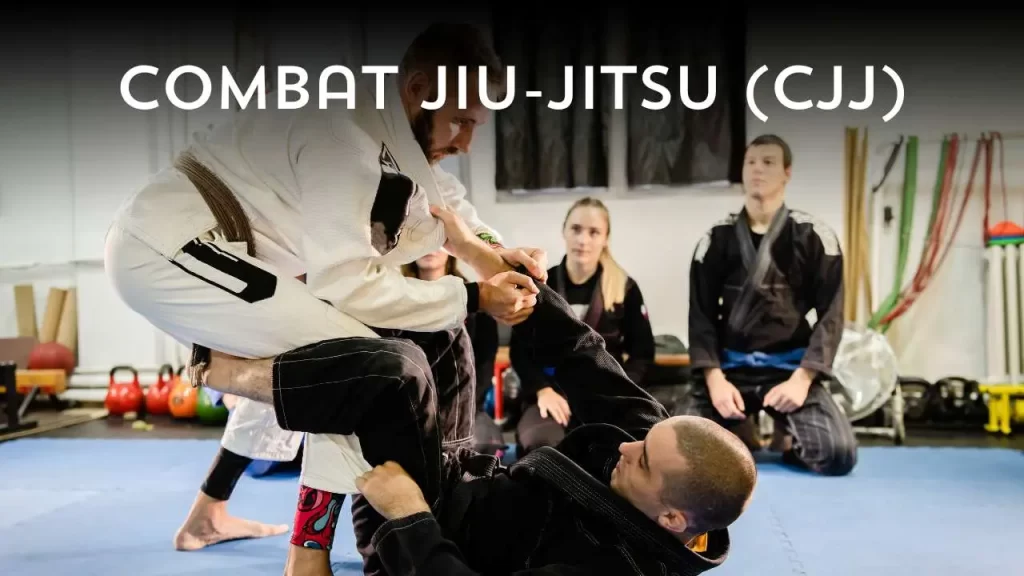
Combat Jiu-Jitsu, also called CJJ, is a style of Jiu-Jitsu that introduces open-handed strikes into the grappling arena. It combines traditional Jiu-Jitsu techniques with striking elements, allowing practitioners to strike opponents on the ground.
CJJ maintains many of the fundamental grappling techniques of Brazilian Jiu-Jitsu but adds the dimension of striking to simulate real-world combat scenarios.
Open-handed slaps, punches, and hammer fists are incorporated during ground exchanges, providing a more realistic representation of self-defense situations.
Including strikes in CJJ offers a unique challenge for practitioners, forcing them to develop heightened awareness and adaptability. It encourages practitioners to consider their positioning and defense while executing effective grappling techniques.
The strikes add an element of urgency and intensity to the training, preparing practitioners for the unpredictable nature of real-world altercations.
CJJ competitions have gained popularity in recent years, with events such as the Combat Jiu-Jitsu Worlds showcasing the effectiveness of this hybrid style. The integration of striking into traditional Jiu-Jitsu techniques makes CJJ an exciting and dynamic form of martial arts that bridges the gap between grappling and striking disciplines.
6. Sambo
Sambo originated in Russia. It is an international martial art identified for its style of amateur wrestling. It encompasses two main forms: Sports Sambo, similar to Judo in its concepts, which specializes in throws and ground fighting, and Combat Sambo, designed for military applications and resembling aspects of MMA.
In Sports Sambo, fighters use many gripping techniques to deliver throws. Ground fighting involves extensive leg locks and control of joints.
The apparel and policies in Sports Sambo differ slightly from those in Judo, but there are similarities in technique and execution.
Combat Sambo sets itself apart by allowing moves like punches, kicks, elbows, knees, headbutts, and groin strikes, incorporating a broader range of strategies than Judo and Sports Sambo.
The similarity to MMA makes Combat Sambo an interesting combination of striking and grappling, making it enormously applicable in real-world combat scenarios.
Sambo emphasizes a mixture of grappling techniques, throws, and ground combat, making it a flexible and well-rounded martial art. Its evolution draws from a rich history of fighting styles, allowing practitioners to adapt to numerous combat conditions.
Sambo’s competitive nature improves technical skills and fosters adaptability and strategic thinking among its practitioners.
7. Judo
Judo stems from the roots of Japanese Jiu-Jitsu. It underwent a large transformation under the guidance of Kano Jigoro. Kano reformed the conventional Jiu-Jitsu strategies, focusing more on throwing opponents than the large selection of attacks utilized in traditional Jiu-Jitsu. This emphasis on throwing strategies, or Nage Waza, has become the cornerstone of Judo.
The evolution of Judo from its predecessors took its reputation on a global scale. In 1964, Judo won an Olympic reputation, marking its rise to the international sporting arena. This pivotal moment raised Judo’s reputation internationally. Attracted practitioners from numerous countries and cultures.
Judo’s influence goes beyond the Olympics. Its leverage, stability, and technique standards have influenced other martial arts, leaving an indelible mark. Arts like Brazilian Jiu Jitsu, Sambo, and even elements of Mixed Martial Arts (MMA) have drawn upon Judo’s throwing techniques and groundwork.
The worldwide spread and Olympic popularity of Judo not only solidified its position as a respected martial art but also paved the way for its values to cross borders, influencing and shaping various other martial arts disciplines worldwide.
8. Kenpo Jiu-Jitsu

Kenpo Jiu-Jitsu sets itself apart by emphasizing striking techniques. It comprises about 70% hand moves and 30% foot strikes.
Unlike martial arts, which focus more on grappling or throwing, Kenpo Jiu Jitsu prioritizes rapid and powerful strikes. It uses circular movements to keep away from incoming attacks. The style revolves around linear attacks, delivering strikes directly down the line to an opponent.
In terms of defense, Kenpo Jiu Jitsu uses a method of rapid execution, which means striking multiple times in a short span.
The first strikes are often intended to stun the opponent. This sets up room for subsequent power punches. Instead of heavily relying on blockading, fighters move out of the way, allowing them to counter-strike fast.
Kenpo Jiu Jitsu is unique in its philosophy of striking first and utilizing grappling and throwing techniques as a last resort due to the power required for such maneuvers. This martial art’s focus is on speedy, efficient strikes. Its philosophy of minimizing useless movements sets it apart from other kinds.
The mixture of defensive strategies, emphasis on powerful strikes, and unique approach to movement distinguish Kenpo Jiu Jitsu as an impressive and distinct martial art.
9. American Jiu-Jitsu (AJJ)
American Jiu-Jitsu, also known as AJJ, is a martial art that combines elements of traditional Jiu-Jitsu, Judo, and wrestling. It was developed in the United States to cater to a more self-defense-oriented approach while incorporating techniques from various grappling arts.
One of the distinguishing features of AJJ is its focus on practical self-defense techniques for real-life situations. While it shares similarities with Brazilian Jiu-Jitsu (BJJ), AJJ emphasizes stand-up techniques, takedowns, and throws more. It incorporates strikes, joint locks, and submissions, making it a well-rounded system for striking and grappling.
AJJ training typically involves defending oneself on the ground and standing effectively. Practitioners learn techniques to neutralize an attacker’s strikes, control their opponent, and apply joint locks or chokes to achieve submission.
With a strong emphasis on leverage and timing, AJJ teaches practitioners to use their opponent’s energy against them, making it suitable for individuals of all ages and sizes.
10. Mixed Martial Arts (MMA)
Mixed Martial Arts (MMA) represents a blend of various martial arts styles. It develops a dynamic and flexible fighting style. Its origins trace centuries, reflecting the combined efforts of combat disciplines like Japanese Jiu-Jitsu, Vale Tudo, and Pankration.
However, as we understand it today, MMA started to take shape in the early 1990s with the advent of the Ultimate Fighting Championship (UFC).
The UFC’s inception aimed to determine the effectiveness of martial arts in combat scenarios.
Fighters from all disciplines – boxing, kickboxing, Sumo, Brazilian Jiu-Jitsu, Judo, and others – clashed in the octagon, showcasing their skills. Royce Gracie’s success in using Brazilian Jiu-Jitsu in early UFC tournaments elevated the status of ground-based fighting.
As the UFC advanced, combatants saw the need to diversify their talent sets. This led to a shift towards a more well-rounded approach.
MMA fighters now incorporate factors from different martial arts: wrestling for takedowns, Brazilian Jiu-Jitsu for ground control, boxing and Muay Thai for striking, and more.
Today, MMA athletes deliver a multifaceted fighting style inspired by a wide spectrum of martial arts. This comprehensive approach grants them versatility in combat situations, allowing them to adapt to different opponents and scenarios. Coaches and training partners refine their skills across disciplines, fostering a complete and adaptable fighting style.
The international success of the MMA has elevated its status. It has made it to the top of fighting sports activities.
Fighters showcase not just their skill in a specific martial art but a variety of techniques, physicality, and mental toughness that make them formidable competitors in the ever-evolving world of MMA.
Frequently Asked Questions
What is the difference between Japanese Jiu Jitsu and Brazilian Jiu Jitsu?
Japanese Jiu-Jitsu originated in Japan centuries ago. It focused on throws, joint locks, and strikes. Brazilian Jiu-Jitsu evolved from Japanese Jiu-Jitsu. It emphasized ground fighting, submissions, and leverage, allowing smaller individuals to triumph over large combatants.
Is Aikido a practical self-defense martial art?
Aikido is a self-defense art focusing on redirecting an attacker’s energy using throws and joint locks. While it is powerful at neutralizing threats, its philosophy is to fix things without causing harm.
What sets Sambo apart from other martial arts like Judo and MMA?
Sambo combines elements of Judo’s throws and ground fighting with striking techniques similar to the ones in MMA. It’s flexible, allowing both competitive sports versions and combat applications.
What makes Mixed Martial Arts (MMA) so popular?
MMA blends techniques from various martial arts disciplines like wrestling, Brazilian Jiu Jitsu, and striking arts. Its charm is found in showcasing fighters with versatile skills across multiple combat styles, making it exciting and unpredictable.
Conclusion
From the historical roots of Japanese Jiu Jitsu to the dynamic evolution of Brazilian Jiu Jitsu, Aikido, Sambo, Judo, Kenpo Jiu Jitsu, and the modern-day prowess of Mixed Martial Arts (MMA), each discipline tells a story of innovation, adaptability, and influence.
These martial arts form combat styles and embody philosophies beyond the mat. Their collective effect showcases a rich collection of techniques, standards, and cultural importance, making the world of martial arts an ever-evolving, multifaceted arena of skill, strategy, and tradition.




